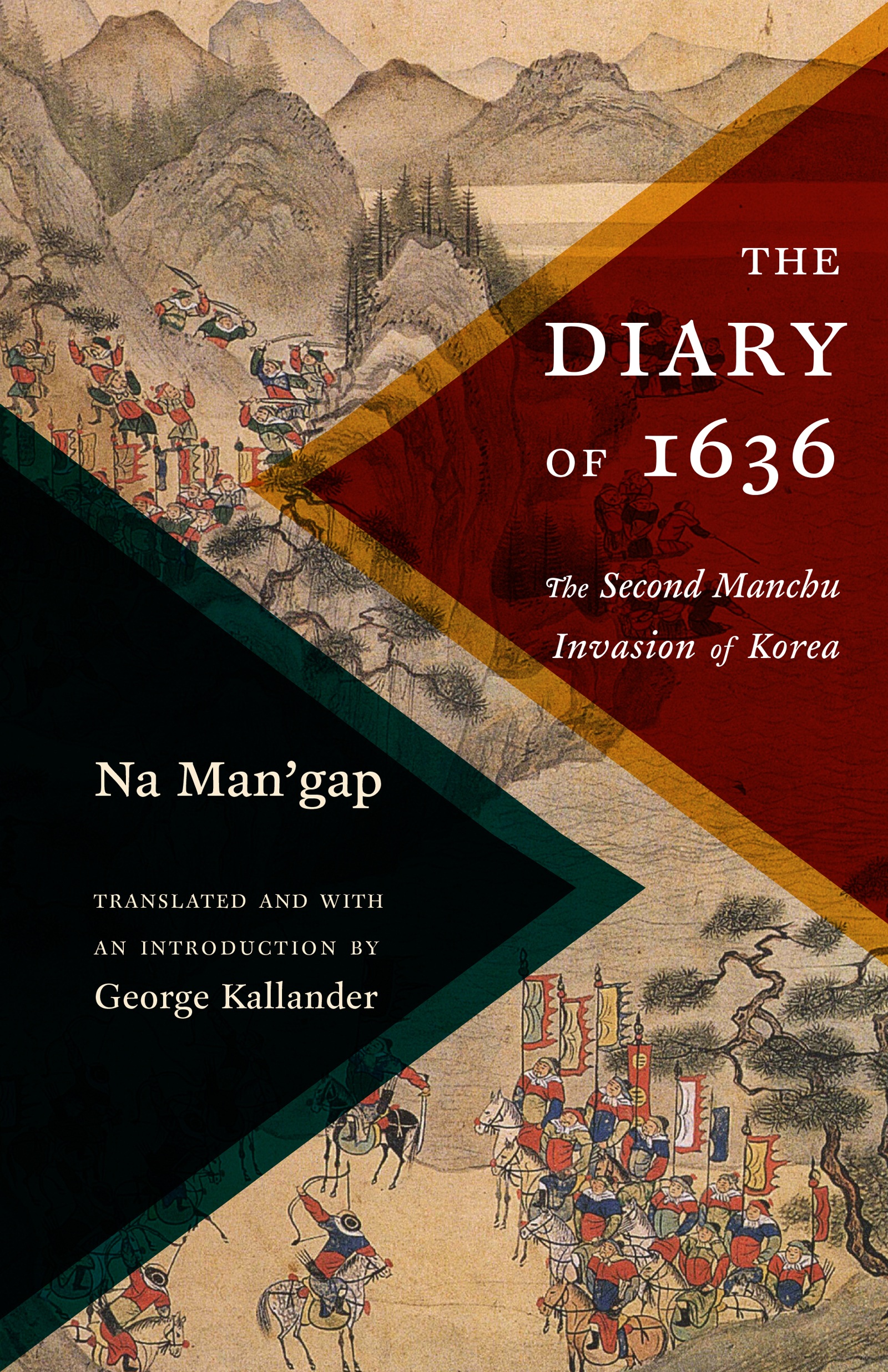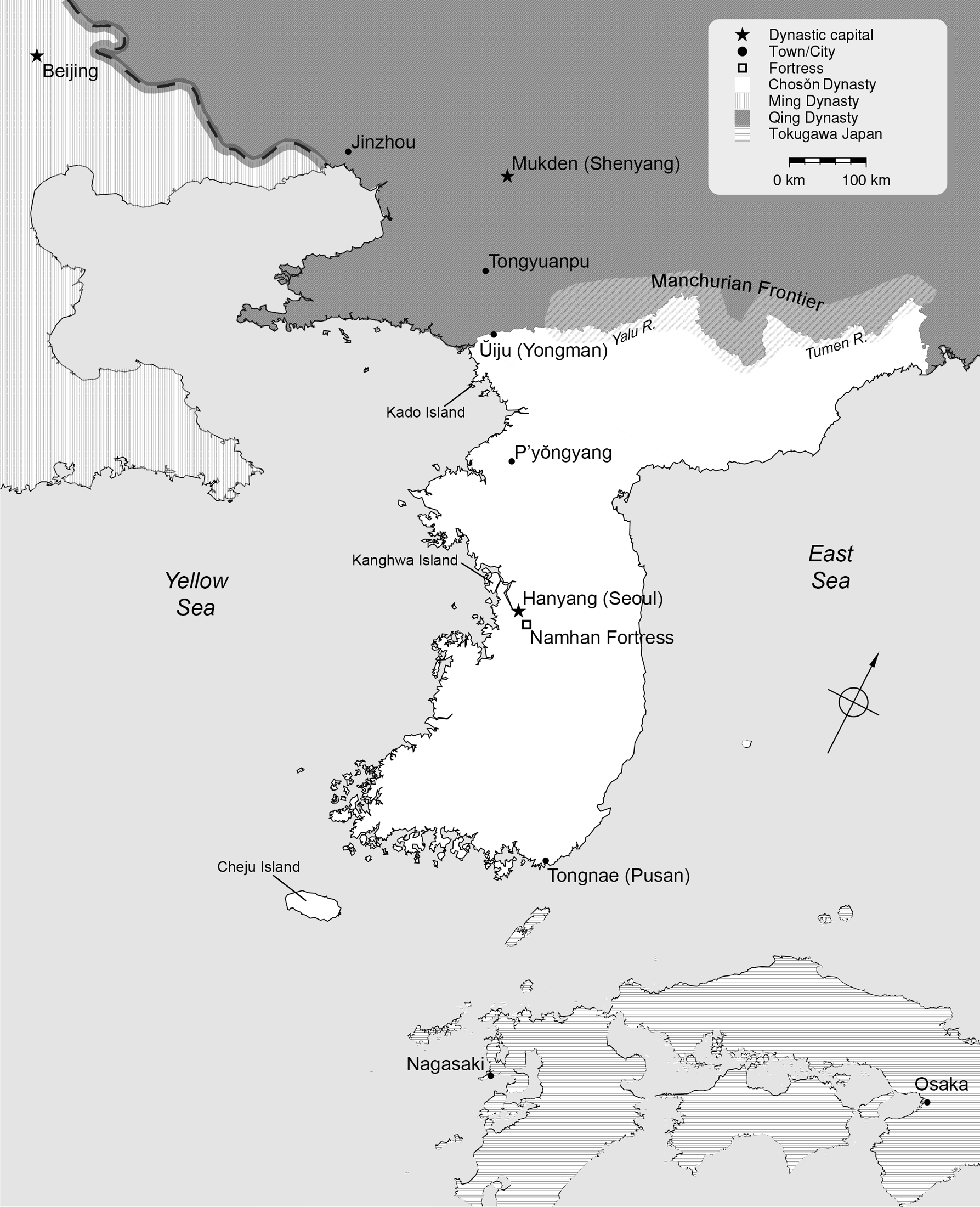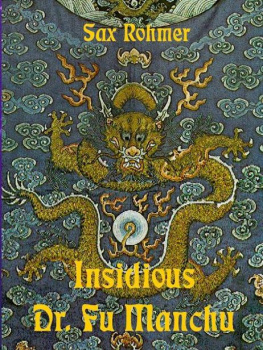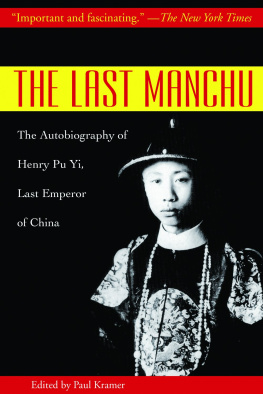George Kallander - The Diary of 1636: The Second Manchu Invasion of Korea
Here you can read online George Kallander - The Diary of 1636: The Second Manchu Invasion of Korea full text of the book (entire story) in english for free. Download pdf and epub, get meaning, cover and reviews about this ebook. year: 2020, publisher: Columbia University Press, genre: Politics. Description of the work, (preface) as well as reviews are available. Best literature library LitArk.com created for fans of good reading and offers a wide selection of genres:
Romance novel
Science fiction
Adventure
Detective
Science
History
Home and family
Prose
Art
Politics
Computer
Non-fiction
Religion
Business
Children
Humor
Choose a favorite category and find really read worthwhile books. Enjoy immersion in the world of imagination, feel the emotions of the characters or learn something new for yourself, make an fascinating discovery.

- Book:The Diary of 1636: The Second Manchu Invasion of Korea
- Author:
- Publisher:Columbia University Press
- Genre:
- Year:2020
- Rating:3 / 5
- Favourites:Add to favourites
- Your mark:
- 60
- 1
- 2
- 3
- 4
- 5
The Diary of 1636: The Second Manchu Invasion of Korea: summary, description and annotation
We offer to read an annotation, description, summary or preface (depends on what the author of the book "The Diary of 1636: The Second Manchu Invasion of Korea" wrote himself). If you haven't found the necessary information about the book — write in the comments, we will try to find it.
The Diary of 1636: The Second Manchu Invasion of Korea — read online for free the complete book (whole text) full work
Below is the text of the book, divided by pages. System saving the place of the last page read, allows you to conveniently read the book "The Diary of 1636: The Second Manchu Invasion of Korea" online for free, without having to search again every time where you left off. Put a bookmark, and you can go to the page where you finished reading at any time.
Font size:
Interval:
Bookmark:

THE DIARY OF 1636
TRANSLATIONS FROM THE ASIAN CLASSICS
TRANSLATIONS FROM THE ASIAN CLASSICS
EDITORIAL BOARD:
Paul Anderer
Allison Busch
David Lurie
Rachel McDermott
Wei Shang
Haruo Shirane
For a list of titles in this series, see .
THE DIARY OF 1636
The Second Manchu
Invasion of Korea
Na Mangap
TRANSLATED AND WITH AN INTRODUCTION BY
George Kallander
COLUMBIA UNIVERSITY PRESS NEW YORK

This publication was made possible in part by an award from the James P. Geiss and Margaret Y. Hsu Foundation.

Columbia University Press
Publishers Since 1893
New York Chichester, West Sussex
cup.columbia.edu
Copyright 2020 Columbia University Press
All rights reserved
E-ISBN 978-0-231-55223-3
Library of Congress Cataloging-in-Publication Data
Names: Na, Man-gap, 15921642, author. | Kallander, George L., 1967 translator.
Title: The Diary of 1636 : The Second Manchu Invasion of Korea / Na Mangap ; translated and with an Introduction by George Kallander.
Other titles: Pyngjarok. English.
Description: New York : Columbia University Press, 2020. | Series: Translations from the Asian classics | Includes bibliographical references and index.
Identifiers: LCCN 2019057504 (print) | LCCN 2019057505 (ebook) | ISBN 9780231197564 (cloth) | ISBN 9780231197571 (paperback)
Subjects: LCSH: Na, Man-gap, 15921642Diaries. | KoreaHistoryManchu Invasions, 16271637Personal narratives. | KoreaHistoryChosn dynasty, 13921910Sources.
Classification: LCC DS913.675.N325 A3 2020 (print) | LCC DS913.675.N325 (ebook) | DDC 951.9/02dc23.
LC record available at https://lccn.loc.gov/2019057504
LC ebook record available at https://lccn.loc.gov/2019057505
A Columbia University Press E-book.
CUP would be pleased to hear about your reading experience with this e-book at .
Cover image: Anonymous artist, Chulgipajkdo, from the series Pukkwan Yujk Tochp. Ink and color on paper, c. eighteenth century, Korea University Museum
Cover design: Chang Jae Lee
I would like to thank a number of people and institutions for helping me complete this book. First, I am deeply grateful to Christine Dunbar at Columbia University Press for her willingness to publish the volume. Her professionalism and guidance every step of the way made the publishing process easy to navigate. I extend this gratitude to Kathryn Jorge and Christian Winting, as well as the editorial board and staff of Columbia University Press. Thank you all greatly. Next, I would like to thank several people for commenting on early drafts of my translation. Zhimin Tao, my good friend and former student, provided invaluable suggestions and corrections, and Don Baker, my colleague from the University of British Columbia, helped me understand some of the more convoluted passages. Don also read an early version of the manuscript and provided me with helpful feedback. Another debt of gratitude rests with Yun Chaeyng, whose work on the original diary by Na Mangap, especially the reprint of the original literary text in his book Pyngjarok, greatly informed this volume. I would like to thank three anonymous reviewers who provided instrumental comments and corrections to the introduction and translation. Their insights have strengthened this workagain, thank you very much. Thank you too to Adriana Cloud and Tracy Stober for copyediting my materials and Alex Martin for creating the maps.
Many colleagues, friends, and locations have helped me along the way. I am forever indebted to my former advisor at Columbia University, Gari Ledyard, as well as to the late JaHyun Kim Haboush for her work in Chosn history and for always inspiring me. I am humbled to have had the chance to work with both of them. I am very grateful to Michael Pettid at Binghamton University for his support, feedback, and good friendship. I would like to thank Norman Kutcher, my friend, colleague, and chair of the History Department at Syracuse University. His guidance on scholarship and life has always been invaluable. Syracuse University and the Department of History are great places to live and work. Both nurture an academic environment that encourages scholarship on the world from which I have benefited. Thanks to Suyoung Son for giving me a chance to present parts of the work at the Wason Conference held at Cornell University.
I owe special gratitude to my wife, Amy, and our two daughters, Mona and Sabrina, for their patience and support while I worked many days and late nights and traveled on research trips to complete my manuscript. Finally, I thank Seoul and upstate New York for being so inspirational.
A number of libraries and their staff helped me complete this project by providing access to primary and secondary source materials that took time to track down. These include Janseogak Library at the Academy of Korean Studies in Bundang; the Center for Korean Classics Collection at Yonsei University (Seoul); Kyujanggak Library at Seoul National University; the National Assembly Library in Seoul; C. V. Starr East Asian and Butler libraries at Columbia University in New York City; the Wason East Asia Collection and Library Annex at Cornell University; and the Interlibrary Loan staff at Syracuse University.
This work was generously supported by the Academy of Korean Studies (Korean Studies Promotion Service) Grant funded by the government of the Republic of Korea (Ministry of Education) (AKS-2013-KCL-2230001). AKS is a vital educational and research institution that helps advance the field of Korean studies in Korea and around the world. Their backing, understanding, and patience while I completed this complicated project are greatly appreciated. I also extend my deep gratitude to the Geiss Hsu Foundation for supporting the publication of my book. Additional assistance came from the W. Terry Pigott Faculty Research and Development Fund provided by the Department of History, Syracuse University. Early research was carried out with the help of the East Asia Program at the Moynihan Institute of Global Affairs and Appleby-Moshur travel grants from the Maxwell School, Syracuse University. Without all of this support, this book would have been impossible to complete.

FIGURE 0.1
Map of Northeast Asia: Chosn Korea, Ming China, Manchu Qing, and Tokugawa Japan, c. 1636.
George Kallander
I n the first half of the seventeenth century, Korea was swept up in the shifting geopolitics of Northeast Asia. At the end of the sixteenth century, thanks to the assistance of China, Korea successfully defended the peninsula against invasion from Japan, but China paid a heavy price for the help it provided Korea as this endeavor, along with other costly expenditures, weakened China militarily and economically. At this crucial transition point in East Asian history, the Chosn dynasty (13921910), a politically stable and culturally vibrant kingdom that was among the most enduring dynasties in the world, ruled the Korean peninsula, while the Ming, one of the most powerful and long-lasting dynasties in Chinese history, ruled China. In accordance with the tributary system that had long governed the diplomatic relationship between China and Korea, Korea accepted subordinate status and paid tribute to China as a superior. Yet Mings weakening state eroded its superior status and created a vacuum into which stepped the Jurchen, a tribe residing in Northeast Asia that had ruled China in the past. Uniting under Nurhachi (15591626) and adopting the name Manchu, these mounted warriors would battle the Ming for domination of China, capture the capital of Beijing in 1644, and found the Qing dynasty (16441912).
Font size:
Interval:
Bookmark:
Similar books «The Diary of 1636: The Second Manchu Invasion of Korea»
Look at similar books to The Diary of 1636: The Second Manchu Invasion of Korea. We have selected literature similar in name and meaning in the hope of providing readers with more options to find new, interesting, not yet read works.
Discussion, reviews of the book The Diary of 1636: The Second Manchu Invasion of Korea and just readers' own opinions. Leave your comments, write what you think about the work, its meaning or the main characters. Specify what exactly you liked and what you didn't like, and why you think so.






